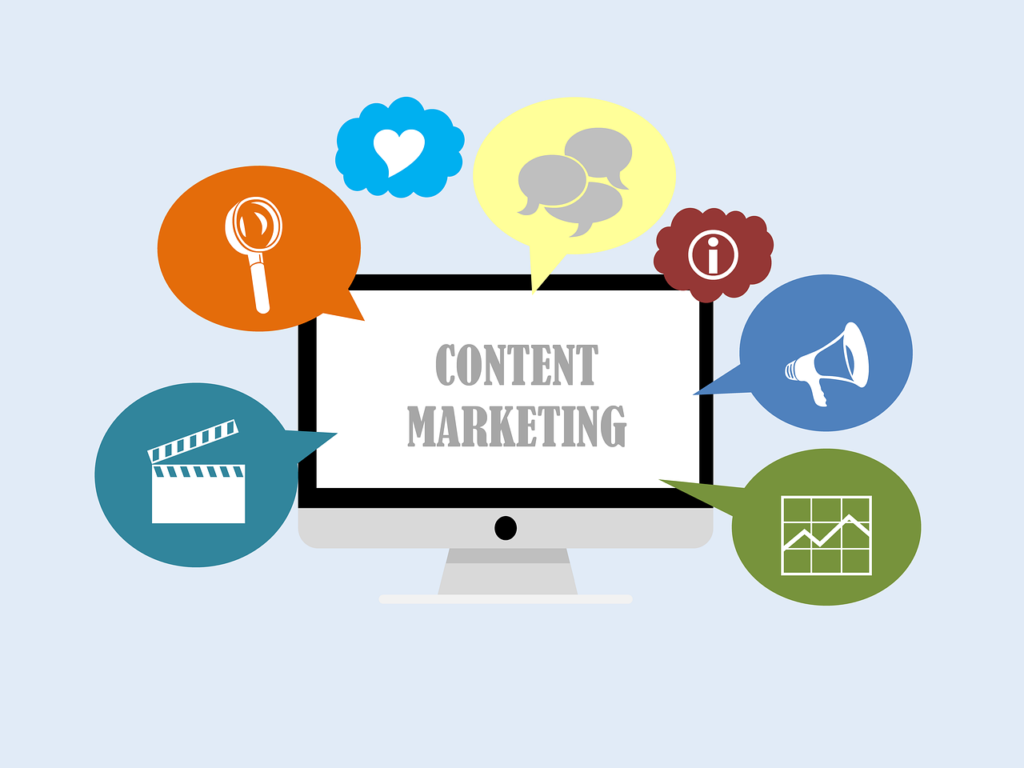Marketing a storage facility effectively requires a strategic approach that highlights your services’ convenience, security, and accessibility. Whether you are just starting or looking to expand your customer base, having a robust marketing plan is essential. This article will guide you through actionable and engaging strategies to market your storage facility, ensuring you attract and retain more clients.
Understanding Your Market
Conducting In-Depth Market Research
To gain a comprehensive understanding of your market, conducting in-depth research is crucial. Start by analyzing the demographic and psychographic characteristics of your target audience. Look into age, income levels, housing situations, and lifestyle choices.
For example, younger adults living in urban areas might need storage for their belongings due to smaller living spaces, while older adults might require storage during downsizing. Use surveys, focus groups, and customer interviews to gather detailed insights into their storage needs and preferences.
Analyzing Local Market Conditions
Understanding the local market conditions can provide valuable insights into your potential customer base. Research the real estate market in your area, including housing trends, the average duration of homeownership, and the prevalence of apartment living.
Areas with high rates of apartment rentals, frequent relocations, or new housing developments often have a higher demand for storage solutions. Analyze local businesses as well, as they might need storage for inventory, equipment, or documents. Tailoring your marketing strategies to meet the specific needs of your local market can give you a competitive edge.
Identifying Seasonal Trends
Seasonal trends can significantly impact the demand for storage facilities. Identify the peak times when people are more likely to need storage, such as during summer when college students are moving or during spring when people are decluttering their homes.
Develop marketing campaigns that align with these seasonal needs. For instance, promote special offers for students at the end of the school year or discounts for homeowners during spring cleaning. Understanding and leveraging these trends can help you attract more customers during peak times.
Utilizing Customer Personas
Creating detailed customer personas can help you better understand your target audience and tailor your marketing efforts. Develop personas based on the common characteristics and needs of your customers. For example, you might have a persona for a young professional moving to a new city, a small business owner needing extra storage for inventory, or a family renovating their home.
Each persona should include information about their goals, challenges, and what they value most in a storage facility. Use these personas to guide your content creation, advertising, and customer service strategies, ensuring they resonate with your target audience.
Exploring Digital Behavior
In today’s digital age, understanding the online behavior of your target audience is essential. Use tools like Google Analytics, social media insights, and email marketing metrics to gather data on how potential customers interact with your online content. Analyze which pages they visit, how long they stay, what content they engage with, and where they drop off.
This information can help you refine your website, content, and marketing strategies to better meet their needs. For instance, if you notice high engagement with blog posts about packing tips, create more content around that topic to attract and retain visitors.
Assessing Competitor Strategies
A thorough analysis of your competitors can provide insights into what works and what doesn’t in the storage facility market. Identify the strengths and weaknesses of other storage providers in your area. Look at their service offerings, pricing models, marketing tactics, and customer reviews. Pay attention to how they position themselves in the market and what unique selling propositions they highlight.
Use this information to differentiate your facility by offering unique features, superior customer service, or more competitive pricing. Understanding your competitors allows you to position your storage facility more effectively and capitalize on market opportunities.
Leveraging Industry Trends
Staying informed about industry trends can help you anticipate changes in customer needs and preferences. Follow industry publications, attend trade shows, and participate in professional associations to keep up with the latest developments in the storage industry.
Trends such as the increasing demand for climate-controlled units, the integration of smart technology, or the rising importance of sustainability can influence your marketing strategies. By staying ahead of these trends, you can adapt your services and marketing efforts to meet evolving customer expectations and gain a competitive advantage.
Building Relationships with Local Businesses
Local businesses can be a significant source of clients for your storage facility. Establish relationships with nearby businesses that might need storage solutions, such as retail stores, contractors, and event planners. Offer tailored storage solutions that meet their specific needs, such as flexible rental terms or dedicated storage areas.
Networking with local business associations and chambers of commerce can also help you connect with potential clients and build partnerships that drive referrals. Fostering these relationships can lead to long-term, mutually beneficial collaborations.
Understanding Regulatory and Economic Factors
Stay informed about the regulatory and economic factors that can impact your storage facility business. Local zoning laws, building codes, and environmental regulations can affect how you operate and market your facility. Economic conditions, such as housing market trends and employment rates, can influence the demand for storage.
By understanding these factors, you can anticipate challenges and opportunities, ensuring your marketing strategies are aligned with the broader economic environment. Proactively addressing regulatory and economic considerations can help you avoid potential pitfalls and position your facility for success.
Building a Strong Online Presence

Developing a Comprehensive Digital Strategy
A comprehensive digital strategy is vital for establishing a robust online presence for your storage facility. Begin by defining your goals, such as increasing website traffic, generating leads, or boosting brand awareness. Identify the most effective digital channels for reaching your target audience, including your website, social media, email marketing, and online advertising.
Create a cohesive plan that outlines how each channel will contribute to your overall objectives. Regularly review and update your strategy based on performance data and emerging trends to ensure it remains effective and aligned with your business goals.
Enhancing Website User Experience (UX)
Your website serves as the cornerstone of your online presence. To attract and retain visitors, ensure your website offers an exceptional user experience. Focus on intuitive navigation, fast loading times, and mobile responsiveness. Use clear and concise language to describe your services, pricing, and facility features. Incorporate high-quality images and videos to give visitors a virtual tour of your facility.
Implement a user-friendly booking system that allows customers to easily reserve and pay for storage units online. Regularly update your content to keep it fresh and relevant, and consider adding a blog section with helpful tips and industry news to attract more visitors and improve SEO.
Optimizing for Local SEO
Local SEO is crucial for storage facilities, as most customers search for storage solutions near their location. Optimize your website and online content for local search terms, such as “storage facility near me” or “self-storage in [your city].” Ensure your business is listed on Google My Business and other local directories.
Include your business name, address, and phone number consistently across all online platforms. Encourage satisfied customers to leave reviews on Google and other review sites to boost your local search rankings. Regularly monitor your local SEO performance and make adjustments as needed to stay competitive.
Leveraging Content Marketing
Content marketing is an effective way to establish your storage facility as a trusted resource. Create a content strategy that includes a mix of blog posts, videos, infographics, and downloadable guides. Focus on topics that address the needs and interests of your target audience, such as packing tips, moving checklists, and storage solutions for different situations.
Share your content on your website, social media channels, and email newsletters to reach a wider audience. High-quality, informative content not only attracts visitors but also helps build trust and credibility with potential customers.
Utilizing Social Media Platforms
Social media platforms are powerful tools for connecting with potential customers and showcasing your storage facility. Create profiles on platforms where your target audience is active, such as Facebook, Instagram, and LinkedIn. Share engaging content that highlights the unique features of your facility, special promotions, and customer testimonials.
Use high-quality photos and videos to capture the cleanliness, security, and convenience of your units. Regularly post updates and interact with followers to build a strong online community. Use social media advertising to reach a larger audience and drive traffic to your website.
Implementing Email Marketing Campaigns
Email marketing is a cost-effective way to stay in touch with potential and existing customers. Build a segmented email list to send targeted messages to different groups within your audience. Develop engaging email campaigns that offer valuable content, such as tips for efficient storage, special promotions, and updates about your facility.
Personalize your emails to make them more relevant and engaging. Use compelling subject lines and clear calls to action to increase open and click-through rates. Regularly analyze the performance of your email campaigns and refine your strategy based on the results to maximize effectiveness.
Utilizing Online Advertising
Online advertising can help increase your visibility and attract more leads. Use platforms like Google Ads and social media advertising to run targeted campaigns that reach your desired audience. Develop ad copy and visuals that highlight the unique benefits of your storage facility, such as security features, accessibility, and special promotions.
Create landing pages that match the intent of your ads and provide a clear path to conversion. Monitor the performance of your ads closely and adjust your targeting, budget, and creative elements to optimize results. Online advertising can drive immediate traffic and generate high-quality leads for your facility.
Managing Online Reviews and Reputation
Online reviews play a crucial role in influencing the decisions of potential customers. Encourage satisfied customers to leave reviews on platforms like Google, Yelp, and Facebook. Make it easy for them by providing direct links and clear instructions.
Monitor and respond to reviews promptly, thanking those who leave positive feedback and addressing any concerns raised in negative reviews. Highlight positive reviews on your website and social media profiles to build credibility and trust. Managing your online reputation effectively can enhance your facility’s image and attract more inquiries.
Engaging with Your Online Community
Active engagement with your online community helps build a sense of loyalty and trust. Create opportunities for interaction by hosting online events, such as webinars, Q&A sessions, and virtual tours.
Encourage your followers to share their experiences and feedback through comments and social media posts. Show appreciation for your community by highlighting their stories and contributions. Regular engagement helps build a sense of belonging and keeps your audience connected to your brand.
Monitoring and Analyzing Performance
Regularly monitoring and analyzing the performance of your online presence is essential for continuous improvement. Use analytics tools to track key metrics such as website traffic, social media engagement, email open rates, and ad performance.
Identify trends and insights to understand what is working and what needs improvement. Use this data to refine your digital strategy, optimize your content, and enhance your user experience. Continuous analysis and adjustment ensure that your online presence remains effective and aligned with your business goals.

Leveraging Social Media Platforms
Developing a Social Media Strategy
A well-thought-out social media strategy is crucial for effectively leveraging social media platforms. Start by identifying your goals, such as increasing brand awareness, driving website traffic, or generating leads. Determine which platforms your target audience frequents most.
For a storage facility, platforms like Facebook, Instagram, and LinkedIn are particularly effective. Create a content calendar to plan your posts in advance, ensuring a consistent and varied posting schedule. This helps maintain an active presence and keeps your audience engaged.
Creating Engaging and Informative Content
Content is the cornerstone of any successful social media strategy. Focus on creating content that is both engaging and informative. Share tips on efficient packing, moving, and storing items. Highlight unique features of your facility, such as climate control, 24/7 access, and high-level security measures.
Use high-quality images and videos to showcase your facility and services. Feature customer testimonials and success stories to build credibility and trust. By providing valuable content, you position your storage facility as a trusted resource and attract more followers.
Using Storytelling Techniques
Storytelling is a powerful tool for connecting with your audience on a deeper level. Share stories about your facility, staff, and customers. Highlight how your storage solutions have helped people during significant life events, such as moving homes, starting a new business, or undergoing renovations.
Use a mix of posts, videos, and live sessions to tell these stories. Storytelling makes your content more relatable and memorable, fostering a stronger emotional connection with your audience.
Implementing Paid Social Media Campaigns
Paid social media campaigns can significantly boost your reach and engagement. Use platforms like Facebook Ads and Instagram Ads to create targeted campaigns that reach specific demographics, such as homeowners, renters, and small business owners in your area. Develop compelling ad copy and visuals that highlight the benefits of your storage facility.
Offer special promotions or discounts to entice potential customers. Use clear calls to action, such as “Reserve Your Unit Today” or “Get a Free Quote,” to drive conversions. Monitor the performance of your ads and adjust your targeting and messaging based on the results to maximize your return on investment.
Hosting Virtual Tours and Live Sessions
Virtual tours and live sessions are excellent ways to showcase your facility and engage with potential customers in real-time. Use platforms like Facebook Live or Instagram Live to host virtual tours of your storage units, highlighting key features and amenities.
Offer live Q&A sessions where viewers can ask questions and get immediate answers. Promote these events in advance to attract a larger audience. Virtual tours and live sessions provide a transparent view of your facility and build trust with potential customers.
Encouraging User-Generated Content
User-generated content (UGC) is a valuable asset for building credibility and trust. Encourage your customers to share their experiences and photos of their storage units on social media. Create branded hashtags and run contests or giveaways to incentivize UGC.
Feature the best posts on your social media profiles and website. User-generated content serves as social proof and helps attract new customers by showcasing real-life experiences with your facility.
Engaging with Your Audience
Active engagement with your audience is crucial for building a loyal community. Respond promptly to comments, messages, and reviews on your social media profiles. Show appreciation for positive feedback and address any concerns raised in negative reviews.
Ask questions and encourage discussions to foster a sense of community. Regularly interact with your followers by liking, commenting, and sharing their posts. Engagement shows that you value your audience and are committed to providing excellent customer service.
Leveraging Influencer Partnerships
Partnering with influencers can help amplify your reach and credibility. Identify local influencers or micro-influencers who have a strong following among your target audience. Collaborate on content that highlights your storage facility and its benefits.
This could include sponsored posts, reviews, or co-hosted events. Ensure that the influencer’s values align with your brand to maintain authenticity. Influencer partnerships can introduce your facility to a wider audience and drive more inquiries.
Analyzing Social Media Performance
Regularly analyzing your social media performance is essential for continuous improvement. Use analytics tools provided by social media platforms to track key metrics such as engagement rates, follower growth, click-through rates, and conversions.
Identify patterns and insights to understand what types of content resonate most with your audience and which strategies drive the best results. Use this data to refine your content, posting schedule, and advertising efforts. Continuous analysis and optimization ensure that your social media strategy remains effective and aligned with your goals.
Integrating Social Media with Other Marketing Efforts
Integrating your social media efforts with other marketing channels creates a cohesive and unified brand experience. Promote your social media profiles on your website, email newsletters, and in-store signage. Share content from your blog or website on social media to drive traffic and increase engagement.
Use social media to announce special promotions, events, and updates. Cross-promote your social media campaigns with online advertising and content marketing to maximize reach and impact. Integration ensures that your marketing efforts are coordinated and reinforce each other, amplifying their overall effectiveness.
Implementing Email Marketing Campaigns
Building a High-Quality Email List
Creating a high-quality email list is the foundation of effective email marketing. Focus on building a list of subscribers who are genuinely interested in your storage services. Use multiple channels to collect email addresses, such as your website, social media, and in-person interactions at your facility.
Offer incentives like discounts, free guides, or exclusive tips to encourage sign-ups. Ensure your sign-up forms are easy to complete and ask only for essential information to reduce friction and increase conversions. Regularly clean your email list by removing inactive subscribers to maintain high engagement rates.
Crafting Personalized and Relevant Emails
Personalization is key to successful email marketing. Use data you’ve collected to personalize emails with the recipient’s name, relevant content, and tailored offers. Segment your email list based on customer behavior, preferences, and demographics.
For instance, send targeted emails to new subscribers with a welcome message and an exclusive discount. Provide long-term customers with updates about new services or special promotions. Tailored content increases the relevance of your emails, making them more engaging and effective.
Creating Compelling Subject Lines and Content
The subject line is the first thing your recipients see and plays a crucial role in whether they open your email. Craft compelling subject lines that are clear, concise, and spark curiosity. Use action-oriented language and create a sense of urgency or exclusivity when appropriate. Once your email is opened, ensure the content is engaging and valuable.
Use a conversational tone and break up the text with images, headers, and short paragraphs to make it easy to read. Highlight key benefits of your storage facility, share customer testimonials, and include tips for efficient storage. Always include a clear call to action, guiding recipients to take the next step, such as booking a unit or contacting your team.
Automating Email Workflows
Email automation allows you to send timely and relevant messages without manual effort. Set up automated workflows for different stages of the customer journey. For example, create a welcome series for new subscribers that introduces them to your facility, highlights key features, and offers a special incentive to reserve a unit.
Implement follow-up emails for potential customers who have shown interest but haven’t booked yet, reminding them of the benefits and providing an easy way to get started. Use automation to send personalized birthday greetings or anniversary messages to build stronger relationships with your customers. Automated emails ensure consistent communication and help nurture leads effectively.
Integrating Email with Other Marketing Channels
Integrating email marketing with your other marketing efforts creates a cohesive and unified brand experience. Use your emails to drive traffic to your website, blog, and social media profiles. Promote your email newsletter on your social media channels and include sign-up forms on your website to grow your subscriber list.
Cross-promote your email content with other marketing channels, such as online advertising and content marketing, to maximize reach and engagement. For example, share your blog posts in your email newsletters and encourage recipients to follow you on social media for more updates and tips. Integration ensures that your marketing efforts are coordinated and reinforce each other, amplifying their overall impact.
Using Advanced Analytics to Refine Strategies
Regularly analyzing the performance of your email campaigns is essential for continuous improvement. Use advanced analytics tools to track key metrics such as open rates, click-through rates, conversion rates, and unsubscribe rates. Perform A/B testing to compare different subject lines, email content, and calls to action to see what resonates best with your audience.
Analyze the data to identify trends and insights, such as which types of content generate the most engagement or which segments of your audience are most responsive. Use these insights to refine your email marketing strategy, optimize your content, and improve future campaigns.
Providing Exclusive Offers and Promotions
Offering exclusive deals and promotions through your email campaigns can drive engagement and conversions. Send special discounts to new subscribers, announce limited-time offers, or provide early access to sales events. Tailor these promotions to different segments of your audience to make them more relevant and enticing.
For example, offer a discount on the first month’s rent for new customers or a loyalty reward for long-term customers. Exclusive offers create a sense of value and urgency, encouraging recipients to take action.
Encouraging Feedback and Interaction

Encouraging feedback and interaction through your email campaigns can help build stronger relationships with your audience. Include surveys and polls in your emails to gather feedback on their experiences and preferences. Ask open-ended questions that invite recipients to share their thoughts and suggestions.
Respond to their feedback promptly and thoughtfully, showing that you value their input and are committed to continuous improvement. Interaction fosters a sense of community and engagement, making your audience feel more connected to your brand.
Personalizing Offers Based on Behavior
Using behavioral data to personalize offers can significantly enhance the effectiveness of your email marketing campaigns. Track how recipients interact with your emails and website, and use this information to tailor your messages. For example, if a subscriber frequently reads your blog posts about packing tips, send them an email with a special offer on packing supplies.
If a customer has recently booked a unit, follow up with an email offering a discount on their next month’s rent or additional services like climate-controlled storage. Behavioral personalization makes your emails more relevant and increases the likelihood of conversion.
Ensuring Compliance and Building Trust
Compliance with email marketing regulations is essential for building trust with your audience and avoiding legal issues. Ensure that your email campaigns comply with laws such as the CAN-SPAM Act, GDPR, and other relevant regulations. Obtain explicit consent from subscribers before adding them to your email list, and provide clear and easy ways for them to unsubscribe.
Include your business name, address, and a clear explanation of why recipients are receiving your emails. Transparency and respect for privacy build trust with your audience and contribute to a positive brand image.
Conclusion
Effectively marketing your storage facility requires a strategic approach that encompasses a deep understanding of your market, a strong online presence, leveraging social media platforms, and implementing well-crafted email marketing campaigns. Each of these strategies plays a crucial role in attracting potential customers and retaining existing ones.
By thoroughly researching your target audience, analyzing local market conditions, and understanding seasonal trends, you can tailor your marketing efforts to meet the specific needs of your potential customers. Building a strong online presence through a user-friendly website, optimized for local SEO, and creating valuable content will ensure your facility is easily discoverable and engaging.
Read Next:
- Top Local Marketing Ideas to Grow Your Business
- Effective Marketing Strategies for Law Firms
- How to Plan Successful Marketing Activation Campaigns
- Healthy and Engaging Social Media Content Ideas for Nutrition Brands
- Marketing Strategies to Attract Members to Your Health Club






















Comments are closed.